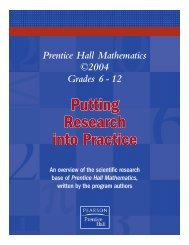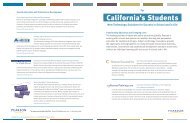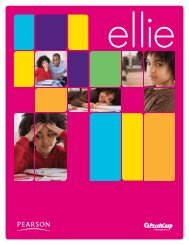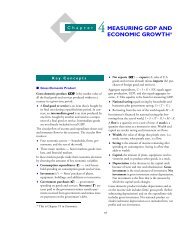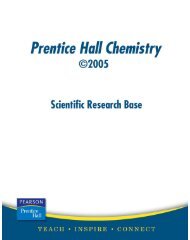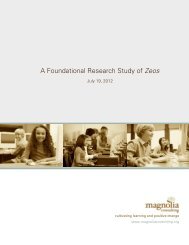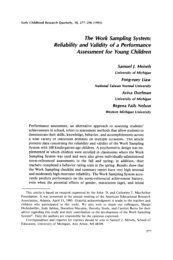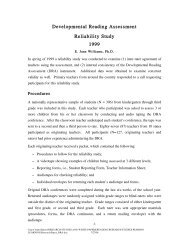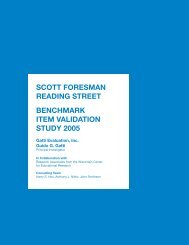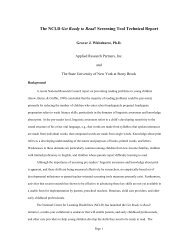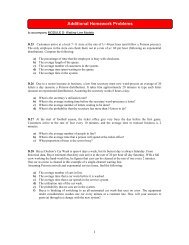Pearson Successmaker Math Efficacy Study 2009-10 Final Report
Pearson Successmaker Math Efficacy Study 2009-10 Final Report
Pearson Successmaker Math Efficacy Study 2009-10 Final Report
Create successful ePaper yourself
Turn your PDF publications into a flip-book with our unique Google optimized e-Paper software.
SuccessMaker <strong>Math</strong> RCT Gatti Evaluation Inc. 9-15-<strong>10</strong>proficiency level, or ethnic background, who opted to participate in the study, were excludedfrom the study. Passive informed consent of both students and parents/guardians was requiredby the research team and secured by the schools.The study schools come from urban or suburban public school districts. A single schoolrepresented each of Arkansas, California, Indiana, New York, and Pennsylvania. Two schooldistricts came from Arizona. One school from each of these districts served kindergartenthrough 8 th grade students and the second school from the second Arizona district was a middleschool. Lastly, both an elementary and middle school represented the Kansas school district.Ethnic and socio-economic diversity among the student population were two criteria theevaluation team considered when recruiting study sites. A third criterion was that studentsexhibit a wide range of ability with respect to mathematics and reading achievement. Table 1shows, according to recent state achievement testing data, the percent of each school’s studentsmeeting state math standards range between 35% below to 24% above statewide results andstudents meeting state reading standards range between 32% below to 25% above statewideresults. The evaluation team sought out diversity in the study sample to ensure the programwould be used by learners of all abilities and backgrounds, thus reflecting the reality that istoday’s elementary classrooms.<strong>Math</strong> InstructionTeachers were expected to implement their current adopted core mathematics curricula asrequired by their district. Four widely-used classroom mathematics programs were utilized bythe sites at 3 rd and 5 th grade, and three different programs were utilized at 7 th grade. The studygroups reported somewhat differing levels of adherence to their adopted math programs.Supplemental math instruction seen across sites included commonplace methods such as websiteexploration, math facts, daily math problems, and test preparation.Adopted <strong>Math</strong> Program Adherence3 rd Grade SuccessMaker comparisonstrict 12.8% 18.8%mostly 59.2% 61.9%some 20.6% 19.3%none 7.4% 0.0%Percents are statistically significantly differentAdopted <strong>Math</strong> Program Adherence5 th Grade SuccessMaker comparisonstrict <strong>10</strong>.3% 25.0%mostly 89.7% 75.0%- 13 -



